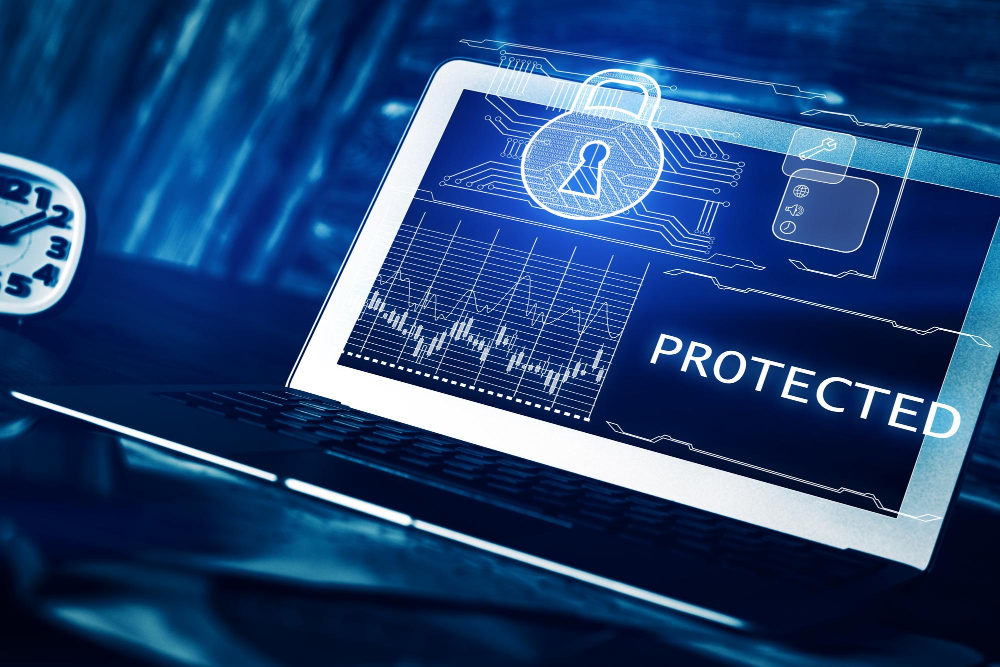The digital world offers limitless opportunities but comes with significant risks. Cybercriminals are constantly devising new ways to exploit vulnerabilities, making it critical to ensure your PC is secure from online threats. This comprehensive guide provides essential steps to strengthen your PC’s online security, safeguarding your data, privacy, and peace of mind.
This guide provides comprehensive and practical steps to fortify your PC against online threats, ensuring a safer and more secure digital experience.
Why Online Security Matters
The Growing Threat Landscape
The internet hosts a wide array of cyber threats, including:
- Phishing Attacks: Deceptive emails or websites that steal sensitive information.
- Malware: Viruses, Trojans, ransomware, and spyware.
- Data Breaches: Unauthorized access to your accounts or files.
- Social Engineering: Manipulative tactics that trick users into revealing information.
Consequences of Poor Security
- Loss of personal and financial data.
- Identity theft and unauthorized transactions.
- Reduced PC performance due to malware.
- Potential legal and financial repercussions.
Essential Steps for Strengthening Your PC’s Online Security
1. Install and Update Antivirus Software
An antivirus program is your first line of defense against online threats.
- Top Choices: Norton, Bitdefender, McAfee, and Kaspersky.
- Automatic Updates: Ensure your antivirus software is updated regularly to detect new threats.
- Real-Time Scanning: Enable this feature to identify threats immediately.
2. Keep Your Operating System Updated
Operating system updates often include patches for security vulnerabilities.
- Windows Updates: Check for updates regularly or enable automatic updates.
- Third-Party Applications: Ensure software like browsers, plugins, and media players are updated.
3. Enable a Firewall
A firewall acts as a barrier between your PC and potential threats from the internet.
- Windows Defender Firewall: Built-in and effective for basic protection.
- Third-Party Firewalls: Consider ZoneAlarm or Comodo for advanced features.
4. Use Strong and Unique Passwords
Passwords are your first line of defense against unauthorized access.
- Best Practices:
- Use at least 12 characters, combining letters, numbers, and symbols.
- Avoid using personal information.
- Password Managers: Tools like LastPass, Dashlane, or 1Password can generate and store secure passwords.
5. Enable Two-Factor Authentication (2FA)
2FA adds an extra layer of security to your accounts.
- How It Works: Requires a second verification step, like a code sent to your phone or email.
- Recommended Services: Google Authenticator, Microsoft Authenticator, or Authy.
6. Avoid Public Wi-Fi for Sensitive Activities
Public Wi-Fi networks are often unencrypted, making them a hotspot for hackers.
- Use a VPN: Virtual Private Networks encrypt your data, protecting it from interception.
- Avoid Logging In: Refrain from accessing banking or personal accounts on public Wi-Fi.
7. Regularly Backup Your Data
Data backups ensure you can recover critical files if your system is compromised.
- Cloud Storage: Google Drive, OneDrive, or Dropbox.
- External Drives: Use encrypted drives for offline backups.
8. Beware of Phishing Scams
Phishing scams are among the most common online threats.
- How to Identify Phishing Emails:
- Check for spelling errors or generic greetings.
- Hover over links to verify their legitimacy.
- Avoid clicking on unexpected attachments.
- Report Suspicious Emails: Most email services have a “Report Phishing” option.
9. Install Browser Extensions for Added Security
Browser extensions can block malicious websites, ads, and trackers.
- Recommended Extensions:
- uBlock Origin: Blocks intrusive ads and trackers.
- HTTPS Everywhere: Forces encrypted connections on websites.
- Privacy Badger: Prevents trackers from monitoring your online behavior.
10. Enable Encryption for Sensitive Files
Encryption adds an extra layer of protection to your sensitive files.
- Built-In Tools: Windows offers BitLocker for encrypting drives.
- Third-Party Tools: Consider VeraCrypt or AxCrypt.
11. Monitor Your Accounts and Devices
Regularly check your accounts for unauthorized access or unusual activity.
- Set Up Alerts: Many banks and online services offer notifications for suspicious activities.
- Use Device Management: Monitor and control the devices connected to your accounts.
12. Educate Yourself and Your Family
Awareness is a critical component of online security.
- Stay Informed: Follow cybersecurity blogs or news outlets.
- Teach Best Practices: Ensure all family members know how to identify and avoid threats.
Common Mistakes to Avoid
1. Reusing Passwords
Using the same password for multiple accounts increases vulnerability.
2. Ignoring Software Updates
Outdated software is a common entry point for hackers.
3. Downloading from Untrusted Sources
Stick to official websites or app stores for downloads.
4. Neglecting to Use Antivirus
Relying solely on built-in security tools may not be sufficient.
5. Clicking Suspicious Links
Be cautious of unsolicited emails or messages with clickable links.
Signs Your PC’s Security May Be Compromised
- Unusual pop-ups or ads.
- Slow system performance.
- Unauthorized account activity.
- Frequent crashes or restarts.
- Unexpected changes in settings or files.
If you notice these signs, run a full system scan immediately and consult an IT professional if necessary.
Conclusion
Strengthening your PC’s online security requires a combination of vigilance, tools, and best practices. By following the steps outlined in this guide, you can significantly reduce your risk of falling victim to cyber threats. Remember, online security is not a one-time task—it’s an ongoing process.
Stay proactive, stay informed, and make online security a priority to ensure a safer digital experience.







